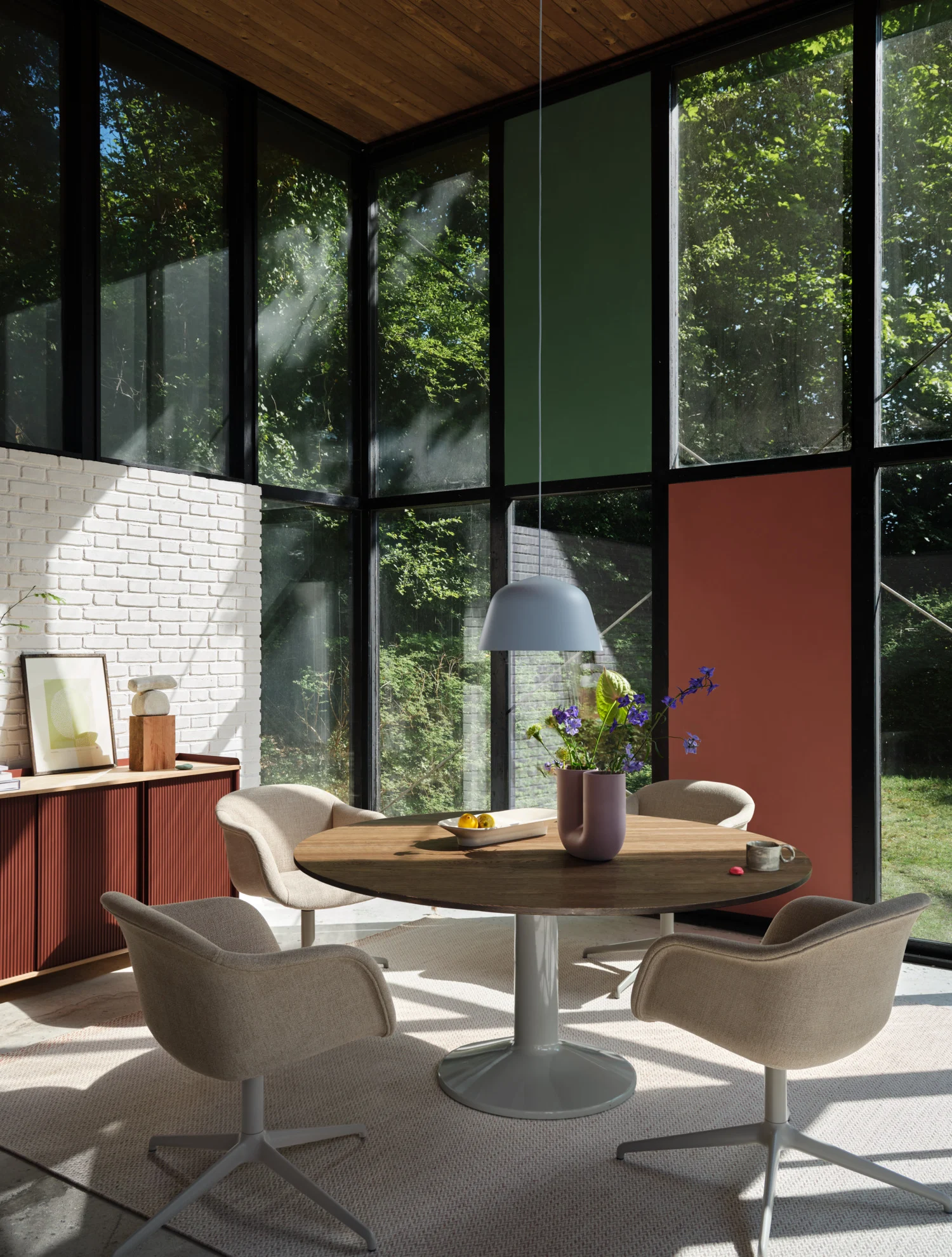
5 Reasons to Buy a Round Dining Table
The Inclusivity of Round Dining Tables
A round dining table sets the stage for a welcoming dining experience that promotes inclusivity and meaningful conversations. Unlike rectangular tables that often have distinct head and side seats, buy round dining table encourages everyone to face each other, creating an ambiance where sharing stories and enjoying meals together becomes second nature. It fosters a sense of togetherness, turning every dining occasion into a special moment.
The absence of a head or sides creates a sense of equality among diners. No one has to sit at the “head” of the table, which can sometimes feel like a place of honour and, consequently, pressure. With a round dining table, every seat is equally desirable, eliminating any potential awkwardness regarding seating arrangements. It’s an excellent choice for fostering a relaxed and friendly atmosphere during meals, whether it’s a casual family dinner or a gathering of friends.
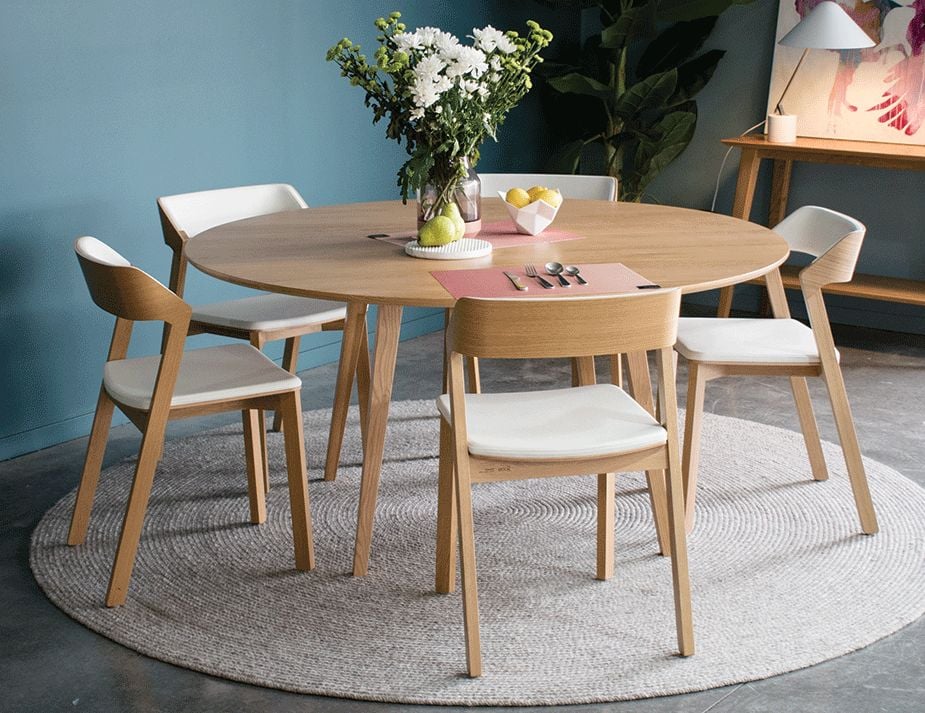
Space-Optimizing Wonders
Round dining tables are masters of space efficiency, making them perfect for both cozy dining nooks and open floor plans. The absence of sharp corners allows for maximum seating capacity without sacrificing comfort. You can effortlessly add an extra chair or two when unexpected guests drop by, making round tables an excellent choice for everyday use and entertaining alike. If you have a small dining area, a round table is a wise pick, optimizing every inch of your space.
In smaller spaces, where every square foot counts, choosing the right size dining table is critical. The circular shape naturally accommodates a snug seating arrangement, ensuring that every guest has ample elbow room without feeling cramped. This space-efficient design means you can comfortably seat more people in a smaller area compared to a rectangular table of similar dimensions.
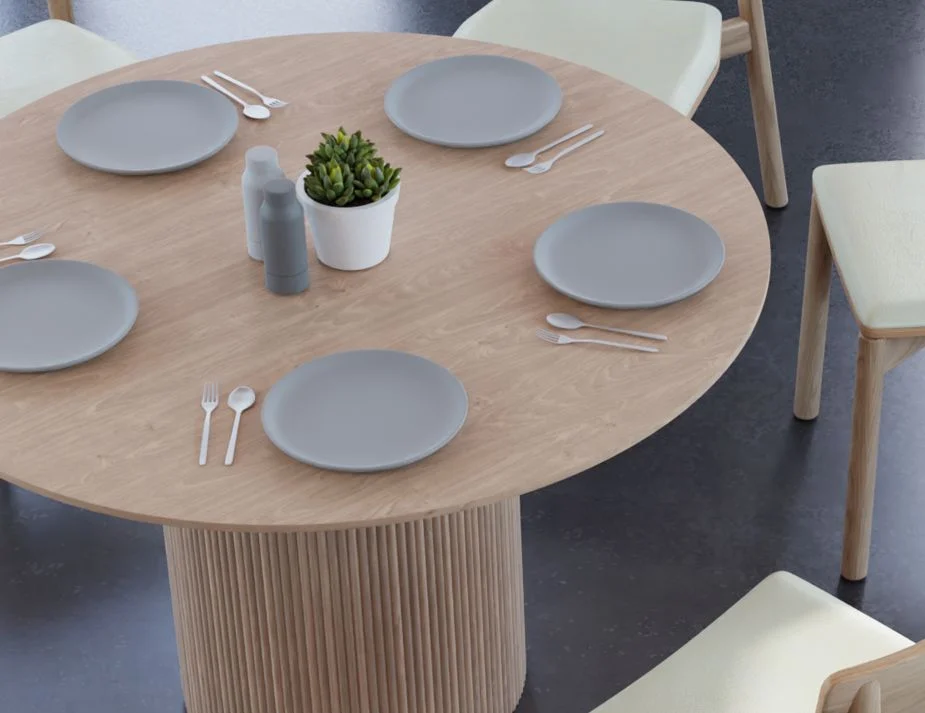
The Versatility of Round Dining Table Arrangements
Round dining tables offer unparalleled flexibility in seating arrangements. While the classic setup with chairs all around is timeless, you can experiment with different seating options. Consider benches for a casual vibe or a combination of chairs and a cozy dining nook for a touch of uniqueness. This versatility allows you to adapt your dining space to your needs and style preferences, ensuring that your dining area truly reflects your personality.
With a round table, you can easily mix and match seating styles to create a more dynamic and personalized dining experience. For example, you can place elegant upholstered chairs on one side and incorporate a built-in bench with storage on the other. This combination not only maximizes seating but also adds visual interest to your dining area.
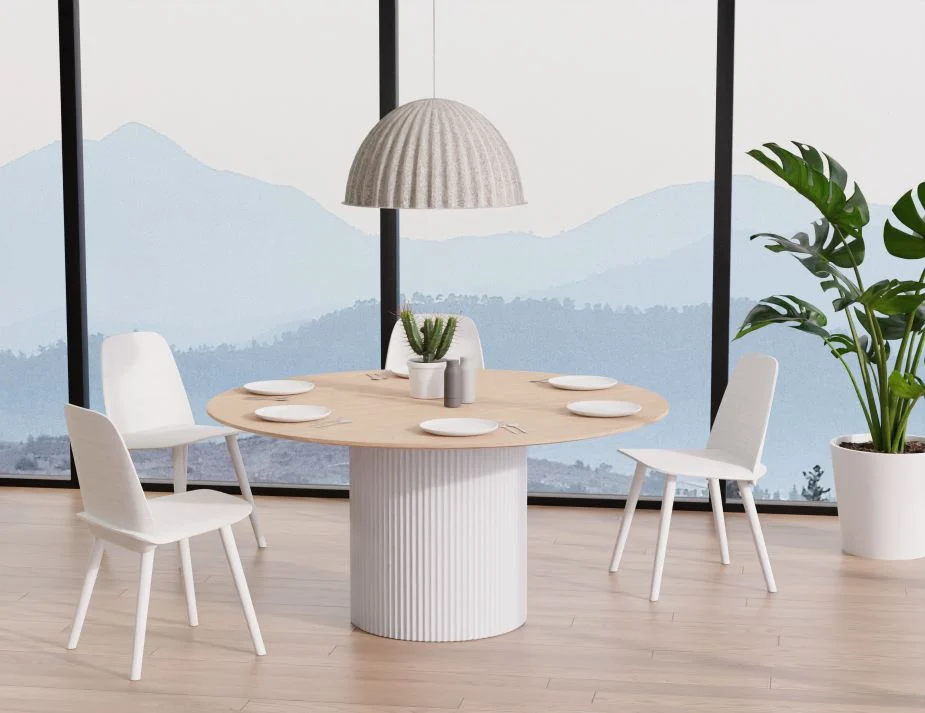
Aesthetic Allure
Beyond their practicality, round dining tables are aesthetically pleasing and can serve as a captivating focal point in your dining area. Their symmetrical shape complements a wide range of design styles, from traditional to modern. You have the freedom to choose from an array of materials, finishes, and leg styles, allowing you to match your decor and create a harmonious look that elevates the overall appeal of your dining space. A round dining table effortlessly blends in with your interior design while adding an element of sophistication.
The simplicity of a round dining table’s design often enhances its aesthetic appeal. This minimalist approach can be a perfect fit for a contemporary or Scandinavian-style dining area, where clean lines and uncluttered spaces are celebrated. However, round tables are equally at home in more ornate settings. Buy a round table with a pedestal base and intricate detailing to add a touch of elegance to a traditional dining room.
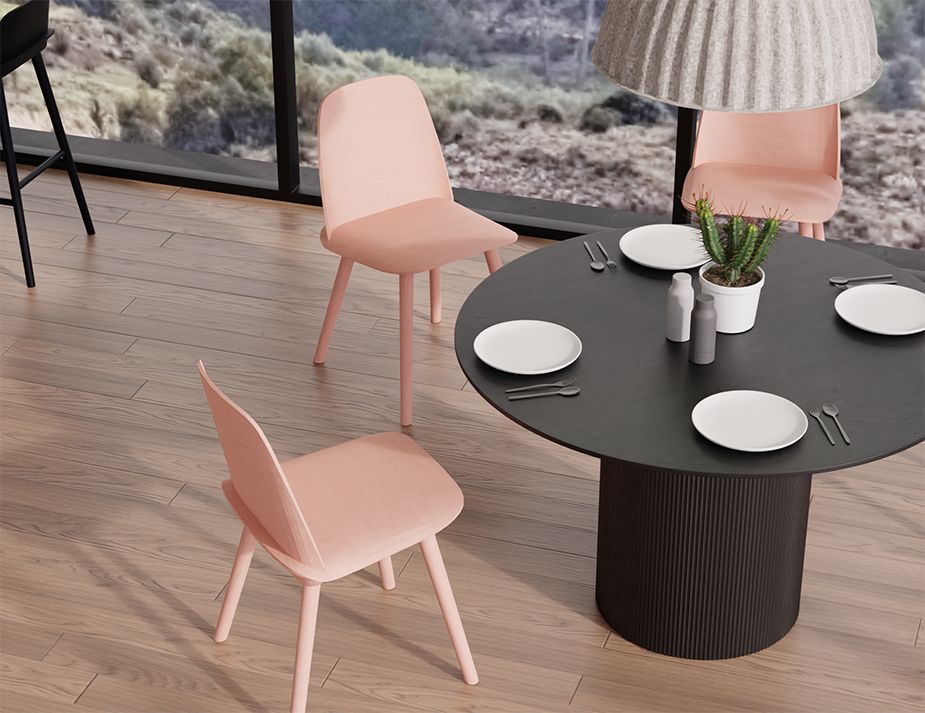
Safety and Style: The Round Dining Table Advantage
Safety and flow are paramount in a dining space, especially if you have young children or limited mobility. The absence of sharp corners on round dining tables contributes to a safer dining environment. No more worries about anyone accidentally bumping into sharp edges. This ensures a stress-free and secure dining experience for everyone.
The rounded shape of the table makes it easier to navigate around the dining area. Whether you’re walking around the table to access a dining chair or simply moving about the room, a round table allows for smoother traffic flow. This can be particularly beneficial in smaller dining areas where every inch counts. You’ll appreciate the ease with which you can move around, whether you’re serving a multi-course meal or simply getting up to refill your glass.
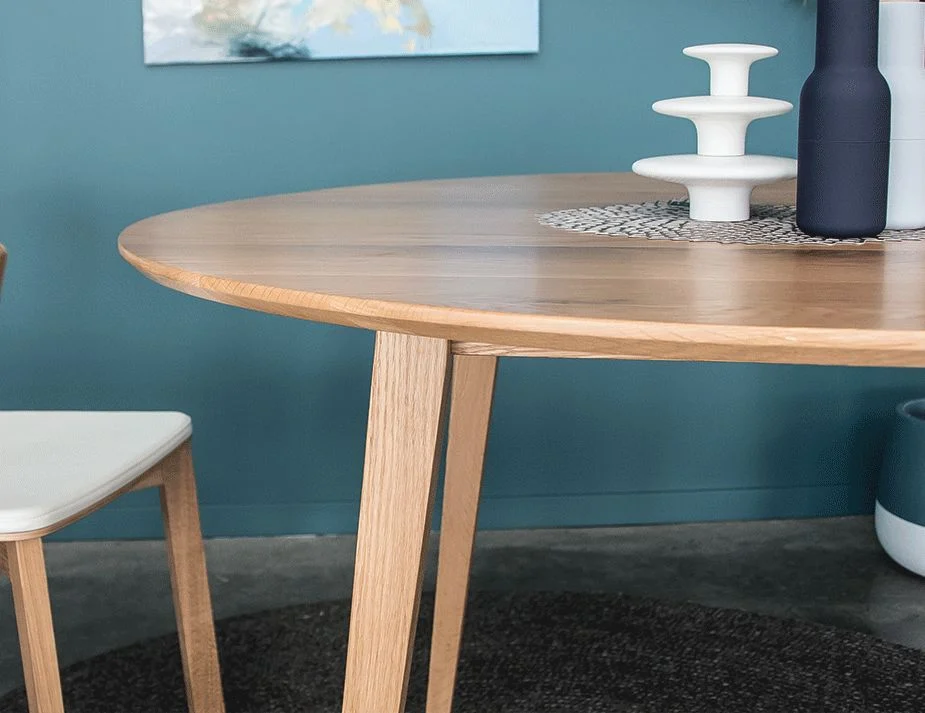
Buy a Round Dining Table & Elevate Your Dining Experience
In conclusion, a round dining table offers a plethora of advantages beyond its aesthetic appeal. Its ability to foster connections, optimize space, provide seating versatility, enhance aesthetics, and improve safety makes it a valuable addition to any home. When contemplating your dining table options, consider the numerous benefits that a round dining table can bring to your dining area. It transforms your space into a welcoming, functional, and stylish area that complements your lifestyle seamlessly. So, why wait? Explore the world of round dining tables and discover the perfect centrepiece for your dining space.
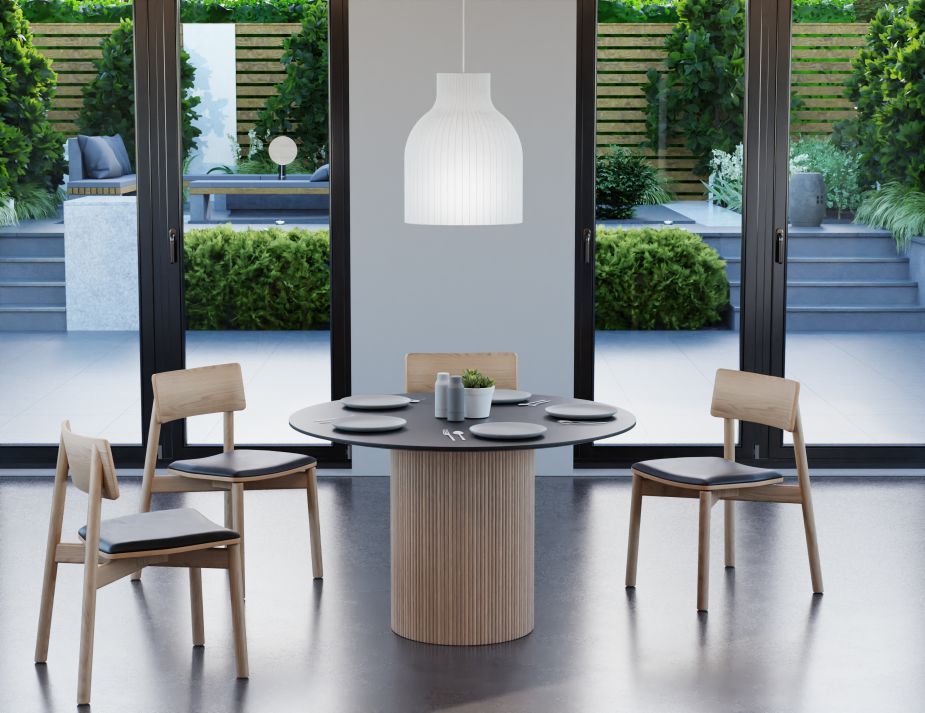
Frequently Asked Questions
Absolutely. Introducing a round table in a rectangular room can provide a striking contrast, breaking up the room’s straight lines and adding visual interest. This combination often enhances the flow of space, offering a dynamic interplay between the table and the room’s parameters.
Absolutely. Round dining tables promote a communal and intimate dining experience. Everyone is seated equidistantly, facilitating easier conversation flow and eye contact. Additionally, without sharp corners, they’re a safer choice, especially in households with young children. Their compact design, without corners, can also often fit into tighter spaces, optimizing room utility.
Indeed, round tables have a distinct advantage in optimizing space. Without corners, they can often be positioned more flexibly in a room, and in situations with extra guests, round tables tend to accommodate more chairs without feeling overly cramped.
To ensure comfort and functionality, a clearance of at least 36 to 48 inches is recommended around a round table. This allows for comfortable seating, easy chair movement, and smooth navigation around the dining area without feeling restricted.
For a harmonious and functional dining setting, maintaining a distance of 36 to 48 inches between the table’s edge and adjacent walls is advisable. This provides ample space for chair movement and allows diners to sit down or stand up without any hindrance.
